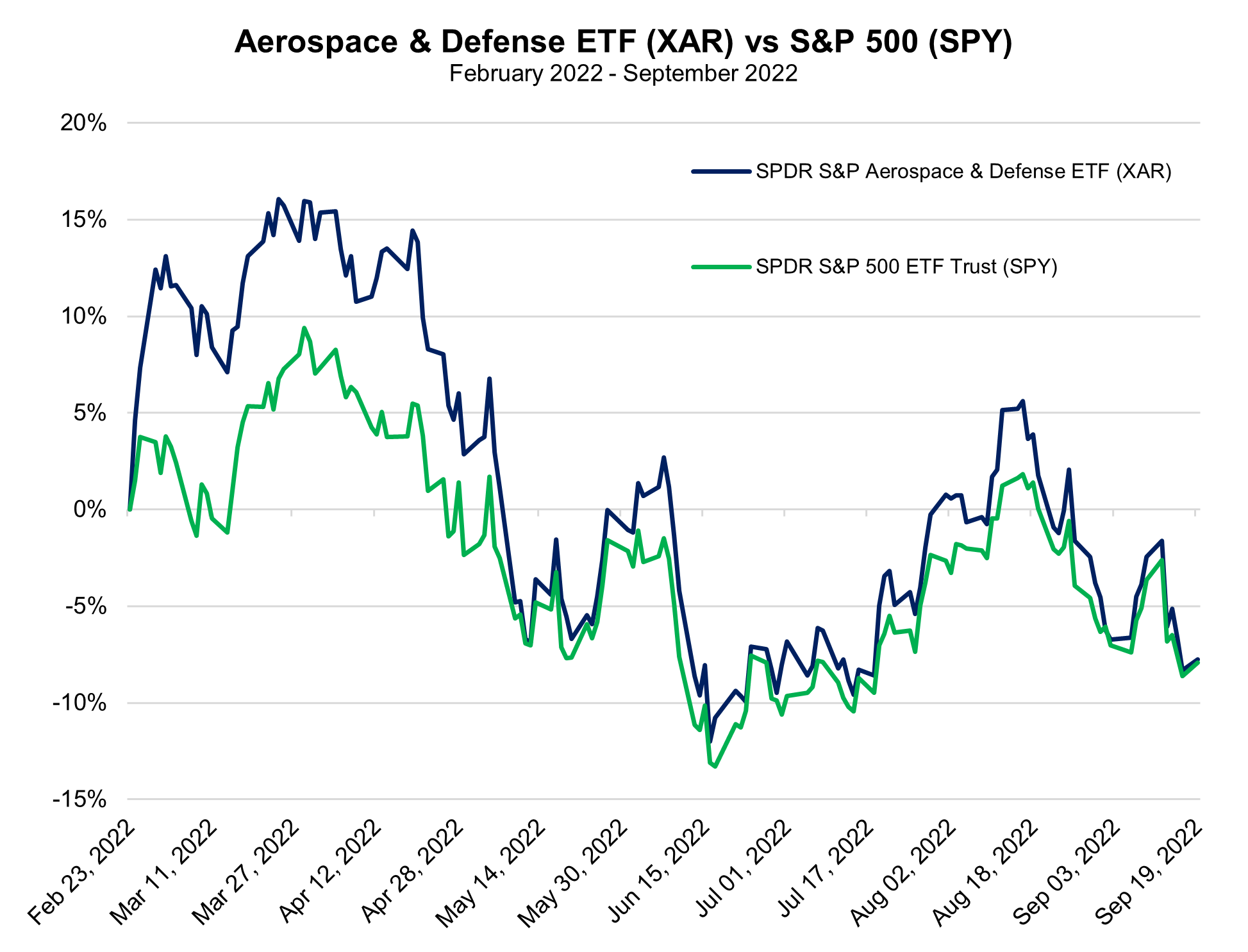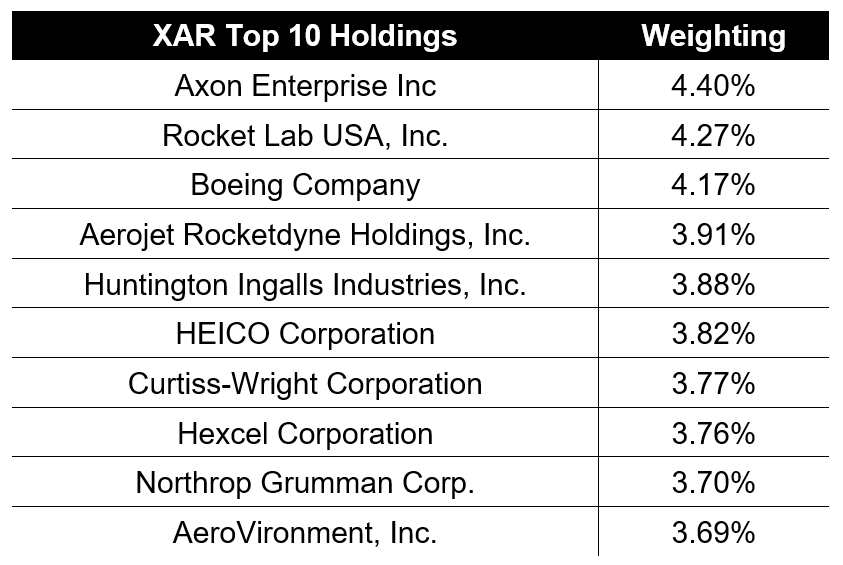|
European defense spending, as well as aid from the US, continues to well up along the eastern reaches of the continent.
Of course, the primary beneficiary of aid in 2022 has been Ukraine, which continues to fight back against Russian invasion. Per the Department of Defense, the equivalent of nearly $16.0 billion in US aid has procured 1,400 Stinger anti-aircraft systems, over 8,500 Javelin anti-armor systems, 16 High Mobility Artillery Rocket Systems (HIMARS) , and many more advanced military systems. MRP previously published a deep dive on the potential impact of HIMARS on the conflict in Ukraine, using them as a base to analyze broader trends in military aid and how they can impact the momentum of the war.
CNN reports that the Biden administration has asked for an additional $12.0 billion in aid to Ukraine to be added to the White House’s continuing resolution bill that’s needed to keep the US government funded beyond September 30. Bipartisan support in Congress for funding the Ukrainian war effort appears resilient enough to include that aid and garner the 60 votes needed in the Senate, but that is not guaranteed yet.
Per DefenseNews, an earlier request from the White House sought $13.7 billion for Ukraine, which included $3.7 billion in Presidential Drawdown Authority and a further $1.5 billion to replenish items sent to Ukraine from US stockpiles. Another $3.0 billion, under the Ukraine Security Assistance Initiative, would allow the Pentagon to contract for new weapons and equipment directly meant for Ukraine.
As MRP noted near the end of last month, a $3.0 billion military aid package to Ukraine (the largest single commitment thus far), was the first to include new orders direct to defense contractors, as opposed to only utilizing the Presidential Drawdown Authority and tapping US military stockpiles.
The supply of American weapons in storage was already being stretched at earlier stages of the conflict. There’s no shortage of money to fund regular aid injections for Ukraine, but there is certainly a scarcity of materials when the US needs to consider its own safety and security. As of June, an analysis by Mark Cancian, a senior adviser with the Center for Strategic and International Studies’ international security program found that the US had already drawn down a third of its available javelin missiles to supply Ukraine. Additional analyses, cited by Military.com, found that one-quarter of the US’s Stinger missiles had been sent to Ukraine. Defense contractors will benefit not only from receiving new orders for direct-to-Ukraine delivery, but also the need to re-fill American stockpiles.
Aside from Ukraine, the Baltic states of Lithuania, Latvia, and Estonia, have become a key focus of the US and other international allies. Each of those states are North Atlantic Treaty Organization (NATO) members. At a NATO summit held just last week, Defense One reported that ministers from several member states discussed implementing defensive maneuvers to counter a potential Russian attack on the Baltics. Estonia, the nation where the summit was held, announced that it would be increasing its defense spending to 2.8% of GDP, up from 2.3% in 2020.
Last month, Politico reported that the US pledged the three Baltic nations $180.0 million in military aid as part of the Baltic Security Initiative in the 2022 federal budget, an increase of $10.0 million over the 2021 package.
Given Poland’s proximity to Russia – only Russian-allied Belarus stands between them – and each nation’s long history of conflict with one another, it doesn’t come as a huge surprise that Poland plans to race out to the front of the pack among European countries in terms of military spending.
Per the Wall Street Journal, Poland’s military expansion plans would make the country Europe’s leading military power by raising its long-term defense spending target from the current 2.4% to 5.0% of gross domestic product. Warsaw wants to increase spending to 3.0% of GDP as early as next year to kickstart an armament overhaul as well as a huge expansion in troop numbers to 400,000 from 150,000.
Earlier this month, Poland announced it closed a deal to buy 96 Apache attack helicopters from Boeing, three times as many as it originally had planned. The country also announced it had agreed to buy 48 new light combat aircraft from South Korea worth $13.7 billion. That followed a previous deal with the Korean Republic to purchase 980 tanks and 648 self-propelled K9 armored howitzers. Defense One noted Poland is also on the hook for 32 F-35As from Lockheed-Martin, expected to be delivered by 2024.
Though it’s firmly within Western Europe, the famously neutral Switzerland made headlines this week by inking a deal to procure their own fleet of F-35A fighter jets from Lockheed. Per DefenseNews, the Swiss military will acquire 36 jets worth nearly $6.3 billion, replacing the nation’s fleets of F/A-18 Hornets and F-5 Tigers between 2027 and 2030. Switzerland is not a member of NATO.
In June, SwissInfo.ch reported the country’s parliament voted to gradually increase the nation’s defense budget to at least 1.0% of GDP by 2030. That is a stark reversal of the post-Cold War trend that compressed Switzerland’s military spending from 1.34% of GDP in 1990 to 0.67% in 2019.
|






Leave a Reply